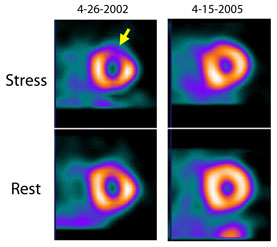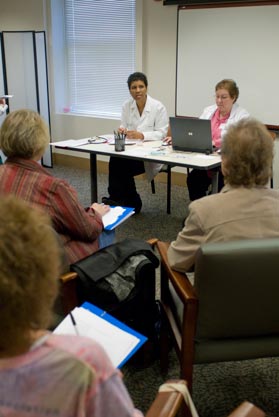Universal care frees doctors to take ‘all measures required’
The ability of physicians to meet the new demands of a modern Hippocratic oath requires universal coverage as outlined by ACP.
Last month in this column I started a discussion of a modern version of the Hippocratic Oath and the relevance it has to present day-professional responsibilities, duties and challenges. To continue examining the oath, I want to explore its second paragraph: “I will apply, for the benefit of the sick, all measures [that] are required, avoiding those twin traps of overtreatment and therapeutic nihilism.”
Today, 46 million Americans are denied access to “all measures” required for treatment because they lack health care insurance. Unfortunately, only physicians take the Hippocratic Oath, not the health care system as a whole. Health outcomes of uninsured people with cancer, cardiovascular disease, stroke, COPD and hip fractures are consistently poorer than for those with coverage. By forgoing or delaying physician visits or therapies, the uninsured are more likely to die from congestive heart failure, myocardial infarctions or strokes than are those with insurance, resulting in as many as 22,000 excess deaths annually (“Uninsured and Dying Because of It: Updating the Institute of Medicine Analysis on the Impact of Uninsurance on Mortality. “
The ability of physicians to “apply, for the benefit of all who are sick, all measures required,” requires universal coverage. The ACP position paper, “Achieving a high-performance health care system with universal access: what the United States can learn from other countries,” published in the Jan. 1, 2008 Annals concludes that universal coverage is the No. 1 lesson to be learned from industrialized countries that provide comparable or better care than the U.S. at less cost.
The College has been a clear leader on this issue. Since 1996, we have advocated a seven-year plan leading to universal coverage that includes both expansion of government programs and refundable tax credits. Updated in 2008, it's the basis for much of the current health care reform legislation.
Even with universal coverage, Americans still face the severe challenge of accessing needed care. The U.S. primary care shortage is a critical and palpable crisis. Estimates are that we will need an additional 46,000 primary care physicians by 2025 to meet the growing demands of an aging population and patients with multiple chronic diseases. Witness the story in Massachusetts, where a universal health care mandate improved coverage but increased the average wait time to see a primary care doctor to more than 100 days, even in a state that has one of the highest numbers of primary care specialists per capita.
At the same time, interest among medical graduates in primary specialty fields continues to drop. We clearly need to reform our dysfunctional payment system to accurately reflect the true value of primary care. We need a system of reimbursement that rewards care coordination, patient centeredness and wellness, and not just the volume of tests, procedures and visits.
Once the patient arrives at the office, how does today's internist avoid the twin traps of overtreatment and therapeutic nihilism? Across our country, physicians appear to avoid these traps quite differently, resulting in a wide variation of quality and costs. Is this due to variation in health resource supply capacity, socioeconomic demographics, or the ratio of primary care to nonprimary care specialists?
In “Discretionary Decision Making by Primary Care Physicians and the Cost of U. S. Health Care.” (Health Affairs 2008;27 no. 3: 813-823) the authors suggest that perhaps these cost and quality variations might be due to regional variations in discretionary decision-making by physicians, such as palliative vs. curative care, the follow up interval for a stable hypertensive, or the initial diagnostic work-up for back pain. Continued focus on these root causes of regional variation and more robust comparative effectiveness studies hold great promise for creating value in our health care system, both in terms of improved quality and reduced cost.
The majority of ACP members practice in solo or small group practices. Nevertheless, our ability to provide the right care, no more and no less, involves far more than what occurs in our individual offices. ACP provides us with the opportunity to join together in creating a system of health care and an environment for its delivery that rewards value and quality of service and offers incentives to avoid overtreatment and therapeutic nihilism. Most importantly, joining with the ACP, we can create a solution that provides all of our patients the ability to receive “all measures required.”




